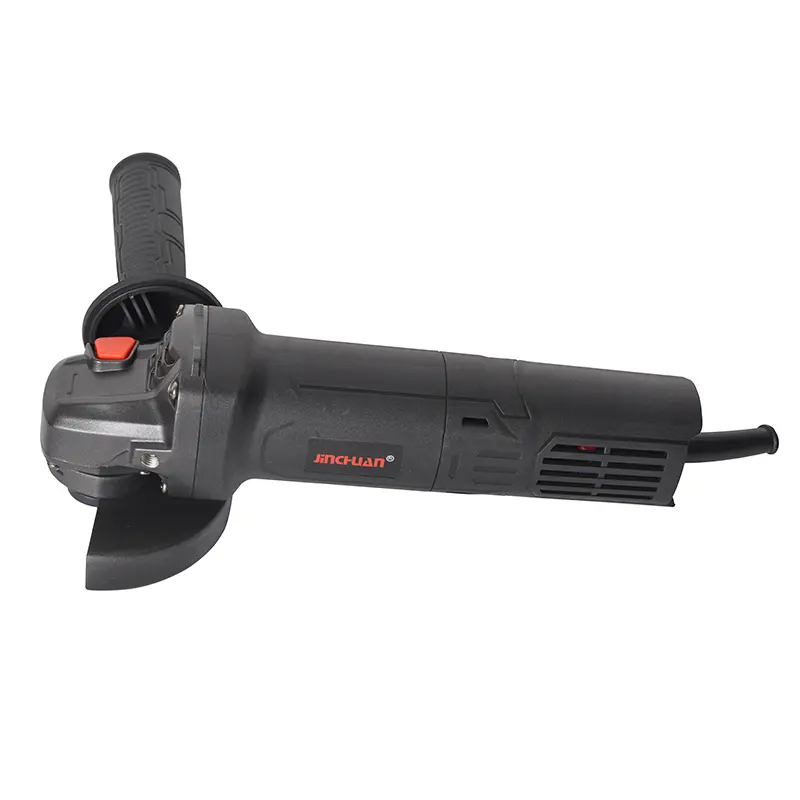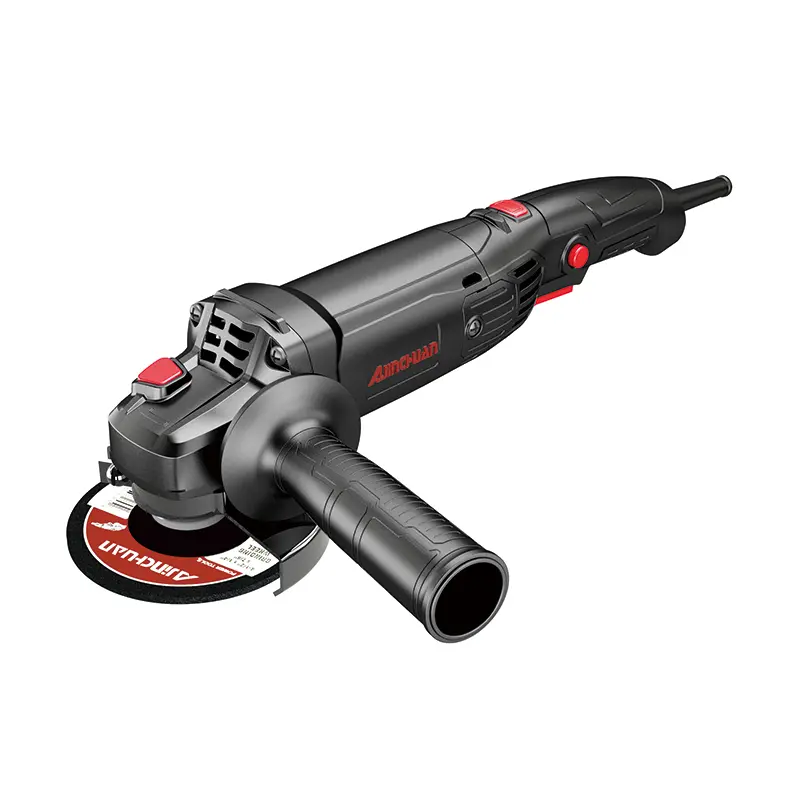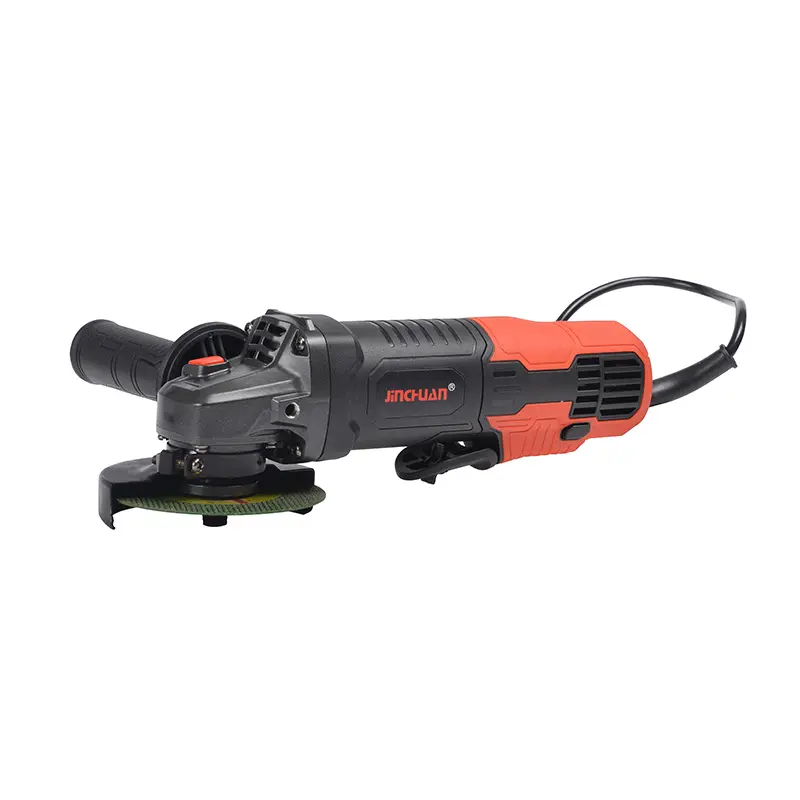In the field of power tools, the performance of Angle grinders, as multi-functional processing tools, directly affects work efficiency and operation quality. Establishing a scientific sample evaluation system is conducive to a comprehensive understanding of product performance and provides a reliable basis for procurement decisions. This article will systematically expounding the key test items for the sample evaluation of Angle grinders, helping you build a complete performance evaluation framework.
First, the basic performance testing system
Power system evaluation
The core performance of an Angle grinder is first reflected in its power system. The test should start from the starting characteristics, observing whether the motor starts smoothly and if there are any abnormal sounds. When running without load, use a sound level meter to measure the operating noise at a distance of 1 meter. The sound pressure level of high-quality products should be controlled below 85 decibels. At the same time, an infrared thermometer is used to monitor the temperature of the casing. After continuous operation for 30 minutes in an environment with a room temperature of 25℃, the temperature rise of the casing should not exceed 40℃.
Rotational speed stability is another key indicator. The speed fluctuations under no-load and load conditions are measured by a digital tachometer. When a high-quality Angle grinder is subjected to a load, the decrease in its rotational speed should be controlled within 10% of the rated speed. During the test, different specifications of grinding wheels need to be selected for verification, with tests conducted step by step from 100mm to 230mm to ensure stable output under various configurations.
Power output characteristics
The actual output power needs to be measured by professional equipment. The input power and output power of the Angle grinder under different load conditions were recorded using a power analyzer, and the efficiency curve was calculated. An excellent design should maintain an efficiency of over 75% within the rated load range. Special attention should be paid to peak power testing, simulating sudden heavy-load conditions, and observing the response characteristics of the overload protection system.
Second, structural integrity testing
Mechanical structural strength
The structural strength of an Angle grinder directly affects its service life. First, conduct a static load test. Apply radial and axial forces to the output shaft and measure the deformation of the main shaft. The spindle stiffness of high-quality products should be capable of withstanding a maximum load 1.5 times that specified by the standard without permanent deformation.
Vibration testing is an important part of evaluating structural design. Use a vibration measuring instrument to measure the vibration acceleration at the three axial handles. According to international standards, the weighted root mean square vibration value during continuous operation should be less than 2.5m/s². During the test, the actual usage posture should be simulated, and the vibration levels at the positions of the side handle and the rear handle should be measured respectively.
Heat dissipation system efficiency
The heat dissipation performance test needs to be conducted in a high-temperature environment. Operate the Angle grinder continuously at an ambient temperature of 40℃ and monitor the temperature of the motor windings. The built-in thermal protection device should act promptly before the winding temperature reaches the safety threshold. At the same time, evaluate the design efficiency of the heat dissipation air duct to ensure that there is no air flow short circuit at the air inlet and outlet.

Third, safety performance verification
Electrical safety test
Electrical safety is a fundamental requirement. Use an insulation resistance tester to measure the insulation resistance between the live parts and the casing. The test value of a new machine should not be lower than 5MΩ. The withstand voltage test requires the application of 1500V AC voltage and maintenance for 1 minute. Only when there is no breakdown or flashover phenomenon can it be considered qualified.
The verification of the double insulation structure is particularly important. Check the thickness of the casing material and the internal insulation layer to ensure that all metal parts that may come into contact have sufficient insulation protection. The tensile test of the power cord is equally necessary. After applying the tensile force specified by the standard 100 times, the displacement of the power cord should not exceed 2 millimeters.
Mechanical safety protection
The protective cover test includes installation convenience and positional stability. The protective cover should be able to rotate 360 degrees and be reliably locked at any position. The adjusting mechanism needs sufficient damping to prevent accidental displacement. The emergency stop switch test verifies its response time and reliability. The time from trigger to complete stop should be within 2 seconds.
Fourth, ergonomic assessment
Operational comfort
The design of the handle requires multi-dimensional evaluation. Measure the diameter of the handle, surface texture and material hardness to ensure sufficient grip while avoiding fatigue. Conduct long-term continuous operation tests, with personnel of different body types participating in the assessment, and record the degree of hand fatigue and operational stability.
Weight balance testing assesses maneuverability by measuring the position of the center of gravity. The center of gravity of a high-quality Angle grinder should be close to the handle position to reduce the torque load during operation. Use a pressure distribution measurement system to record the pressure distribution of each part of the palm. The optimally designed tool should avoid local high-pressure points.
Layout of control components
The layout of switches and regulating devices directly affects the user experience. Test the operating force and stroke of the switch to ensure that it can be operated easily even when wearing gloves. For stepless speed regulation models, it is necessary to verify the linearity of speed regulation and observe whether the rotational speed changes smoothly with the trigger depth without sudden jumps or lags.

Fifth. Environmental Adaptability Test
Simulation of different working conditions
Environmental adaptability testing simulates various usage scenarios. Test the dust-proof performance in a dusty environment. After running for 4 hours, disassemble the machine to check the accumulation of dust inside. The insulation performance and operational stability were tested and verified in a high-temperature and high-humidity environment at 40℃ and a relative humidity of 90%.
The adaptability of power supply should not be ignored either. For the AC Angle grinder, test its performance when the rated voltage fluctuates by ±10%. For battery-powered Angle grinders, it is necessary to test their output characteristics under different battery states, especially the power retention capacity at low battery levels.
Material durability
The impact resistance test of the shell material was conducted through a ball drop experiment. When a 500-gram steel ball was freely dropped from a height of 1 meter to impact the shell, no cracks were produced. The aging resistance test of rubber components needs to simulate the hardness changes after long-term use. The hardness change rate of high-quality rubber materials should be controlled within 15%.
Sixth, professional application testing
Metal processing testing
Select typical processing scenarios for testing. The stainless steel cutting test uses 2-millimeter thick plates to measure the cutting speed and the quality of the cut edge. Weld grinding tests evaluate the performance on different welding materials, and record the grinding efficiency and the wear of the grinding wheel. Special attention should be paid to testing the operational flexibility in narrow Spaces.
Evaluation of stone processing
Cutting tests were conducted using granite and marble samples, with a focus on observing the dust control effect and cutting accuracy. After continuous cutting for 10 meters, measure the width deviation of the cutting seam. High-quality products should be able to maintain an accuracy of ±0.5 millimeters. At the same time, evaluate the effect of the splash-proof design to ensure electrical safety under wet cutting conditions.

Seventh, Test Data analysis and reporting
Standardization of performance parameters
Establish standardized test data record forms to ensure that all test results are traceable and comparable. The key parameters should include information such as the test environmental conditions, instrument model, and operator. Analyze the degree of dispersion of test data using statistical methods to evaluate the consistency and stability of the product.
Comprehensive scoring system
Build a scoring model that includes weight coefficients and assign appropriate weights to each performance indicator based on actual usage requirements. For instance, in the application of the construction industry, durability and environmental adaptability carry relatively high weights; For precision machining operations, vibration control and precision weights are even more important.
Long-term performance prediction
Estimate the product’s service life through accelerated life test data. Establish life curves for key components such as brushes, bearings, and switches to provide a basis for maintenance plans and quality assurance policies. At the same time, analyze the failure modes and identify potential design improvement points.
Establishing a systematic sample evaluation process for Angle grinders can not only accurately determine the performance level of the products but also provide direction for product improvement. A complete performance profile can be constructed through comprehensive testing covering basic performance, structural strength, safety features, human-computer interaction, environmental adaptability and professional applications. It is recommended that detailed test records and video materials be retained during the evaluation process, and a traceable test database be established to provide reliable technical basis for long-term product selection and supply chain management. A scientific and rigorous evaluation system will eventually translate into confidence and accuracy in procurement decisions.
Post time: Nov-04-2025
